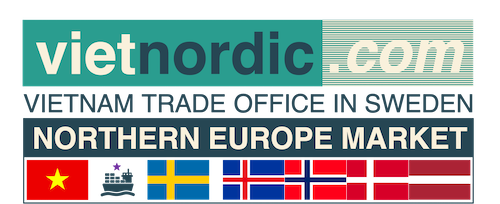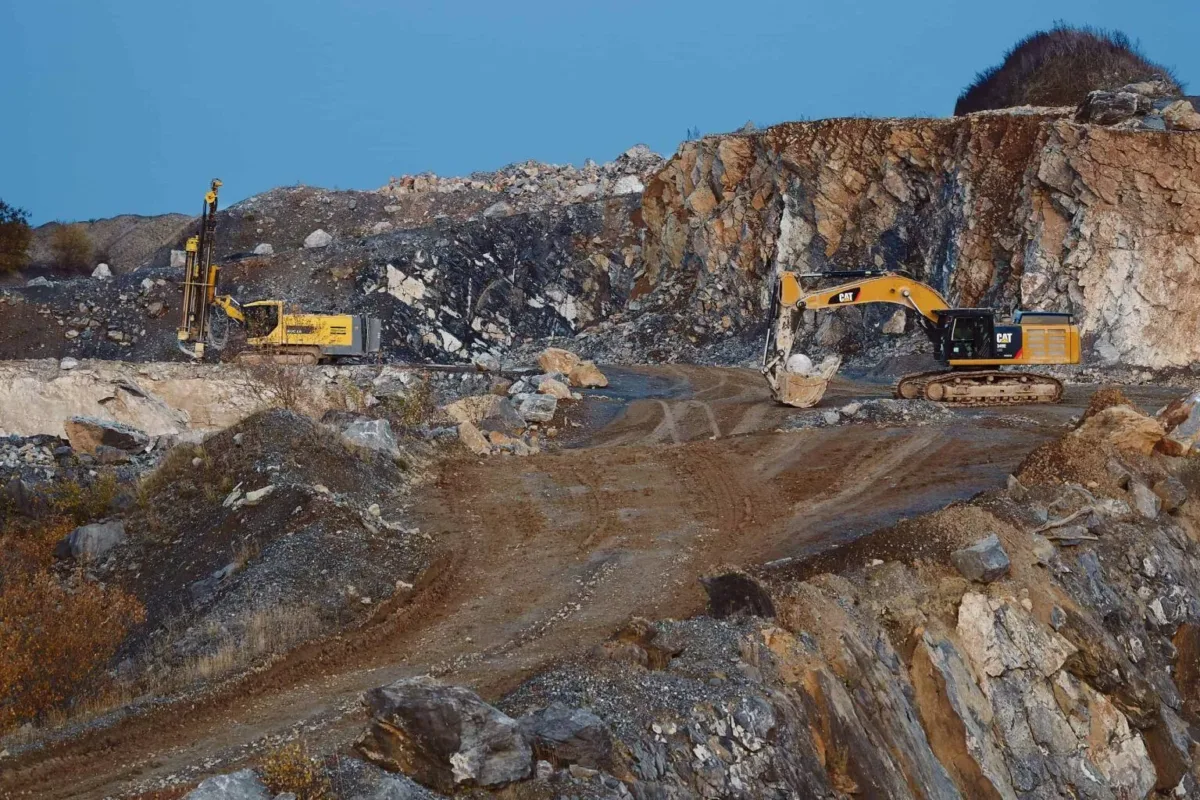Ranked third in the world in terms of its rare earth mining potential, Vietnam could become a major player in rare earth supply chains. Here’s how foreign investors can get involved.
Rare earths are essential elements for the production of various products, including cancer drugs, smartphones, and renewable energy technologies. At the moment, China accounts for 63 percent of the world’s rare earth mining, 85 percent of rare earth processing, and 92 percent of rare earth magnet production.
As the world moves towards a green energy future, and trade friction persists between China and the US, alternative sources of rare earths are in demand. With the rapid advancements in technology, a favorable investment climate, and the world’s third largest supply of rare earths, Vietnam is becoming an attractive destination for investors in the sector.
The global rare earth supply chain
Rare earths are a group of metallic chemical elements that are difficult to find in large quantities, which possess special magnetic and electrochemical properties. Contrary to their name, rare earths are not always particularly rare and can be found throughout the earth’s crust. However, they are often distributed in higher volumes of smaller deposits, making their extraction challenging and expensive.
The global rare earth reserves have been estimated by the American Geological Survey to be 120 million tons. Among these, China possesses 44 million tons, Brazil has 22 million tons, Vietnam is estimated to have 20 million tons, followed by Russia with 18 million tons.
China’s market share and geopolitics
According to several studies, China possesses more than 90 percent of the global rare earth supply. As a result, China has the ability to utilize rare earths as a geopolitical tool. For instance, China threatened to halt rare earth exports to Japan in 2010 over a detained Chinese fishing trawler. Notably this prompted Japanese scientists to explore and evaluate rare earth mines in Vietnam.
This unbalanced situation has raised concerns for customers who depend on China for their rare earths supply, in particular the United States, South Korea, and Europe. Furthermore, prices of rare earths have continued to rise sharply, prompting many countries to revive their own rare earth mining industries or seek alternative sources of supply outside of China.
Vietnam’s rare earth reserves
Vietnam has reserves of approximately 20 million tons of rare earth, which are mainly distributed in the northwest region of the country. These reserves are valued at approximately US$3 trillion, providing a significant opportunity for the nation’s economic development.
Rare earth mining in Vietnam is concentrated in the Northwest and Central Highlands and includes light rare earth groups of hydrothermal origin. Various rare earth mineral deposit points have been identified, such as North Nam Xe, Nam Nam Xe, Dong Pao (Lai Chau), Muong Hum (Lao Cai), and Yen Phu (Yen Bai).
There are also some small rare earth deposits scattered along the coast from Quang Ninh to Vung Tau.
The environmental and social impact of rare earth minerals extraction and processing
Rare earth ore mining and processing generates a significant amount of waste, resulting in negative environmental impacts. Waste rock is stored in landfills and is often exposed to the environment, which can cause toxic substances to dissolve and spread in groundwater systems and soil.
China’s experience offers a clear example of the harmful effects of rare earth mining whereby the use of outdated technology in mining has led to serious environmental pollution.
The Yellow River, an important water source for over 150 million people, has been threatened by waste from rare earth mines. In Guangdong province, strong acids leaking from nearby rare earth mining sites have damaged rice fields, streams, and canals.
In response to these environmental and health concerns, China reduced mining output and introduced greater regulation of rare earth mining in 2012.
Challenges faced by Vietnam in rare earth mining and processing
Technology
Vietnamese enterprises lack deep processing technology. Many exploration and processing companies have struggled to access processing technology, presenting a considerable challenge for businesses to penetrate the domestic market and establish exports.
Commitment
Domestic enterprises are not fully committed to investing in research and adopting a more comprehensive strategy towards rare earth ore processing technology. There is a distinct lack of investment, nor is there a comprehensive research and development strategy for the sector.
Mechanisms and policies
Regulatory mechanisms and policies are critical to advancing rare earth mining activities. Resolution No. 10, issued on October 2, 2021, acknowledges the importance of maintaining rare earth mining operations. It does, however, stop short of providing specific mechanisms and policies. Notably, investment in research and international cooperation is necessary for the advancement of the mining of these minerals.
Enterprises are only able to complete 40 percent of the processing needed to make rare earths usable. This is well below the Ministry of Industry and Trade’s minimum export standard of 95 percent.
Major domestic players in Vietnam’s rare earths industry
The Vietnam Investment and Construction Joint Stock Company (CAVICO Vietnam) and the Vietnam Institute of Radiation Technology recently signed an agreement for the research, development, and construction of a scandium rare earth deep processing plant. This agreement is expected to pave the way for the development of the rare earth industry within Vietnam.
Currently, CAVICO Vietnam is operating a mining and processing facility in Laos, which covers an area of 80 km2 in Bolikhamxay province. This is under an investment license permitting the mining and processing of nickel, iron, cobalt, gold, and silver ores.
International firms operating in Vietnam’s rare earths industry
Collaborating with Japan, the General Department of Geology and Minerals has discovered rare earth deposits in Lao Cai province alongside deposits in Yen Bai, Ha Giang, Cao Bang, Lang Son, Nghe An, Kon Tum, and Lam Dong.
In December 2014, the Ministry of Natural Resources and Environment granted a license to Lai Chau Rare Earth Joint Stock Company and their Japanese partner to extract rare earth ores from a site in Lai Chau province. This mine is believed to hold the highest volume of reserves in the country and is capable of large-scale industrial exploitation.
Aside from Lai Chau, the ministry has also granted licenses for rare earth mining in Yen Bai province. Although this mine has smaller reserves, it is as yet untouched and may be highly profitable if exploited effectively and efficiently.
In 2022, Vietnam Rare Earth Joint Stock Company signed an agreement on rare earth export with ASM & KSM Metal Co., Ltd and the government of Chungcheongbuk-do province in South Korea. This will see the two companies work together to develop mining operations in Yen Bai province. It is estimated that the site contains 30,000 tons of rare earth reserves.
Government policies and regulations
Resolution No. 10-NQ/TW, issued on February 10, 2022
This resolution outlines strategic directions for the geology, minerals, and mining industry up to 2030. The resolution encompasses four key objectives.
- Geological and mineral resources are considered vital resources for socio-economic development and need to be fully planned, investigated, and explored.
- Basic geological and mineral surveys must be conducted proactively and serve as a foundation for formulating strategies, master plans, and plans for socio-economic development.
- Planning management, basic geological and mineral investigation, exploration, exploitation, processing, and use of minerals must have a strategic vision to meet the requirements of socio-economic development in the short, medium, and long term.
- There must be an effective connection between planning, investigation, exploration, and exploitation in processing and using minerals.
The Law on Minerals
The Law on Minerals covers various aspects of mineral activities in Vietnam, including general provisions, mineral strategies and planning, and responsibilities to protect unexploited minerals. There are also regulations on basic geological investigation, environmental protection, mineral exploration, exploitation, and financing.
Vietnam’s international commitments to foreign investment in mining
CPTPP
The Comprehensive and Progressive Agreement for Trans-Pacific Partnership (CPTPP) outlines conditions for foreign investment in the mining sector in Vietnam. Essentially, approval for foreign investment will only be granted if the investment project is deemed to bring net benefits to Vietnam.
Various factors are taken into account. This includes: the project’s impact on economic activity, job creation, equipment and services made in and exported from Vietnam, the extent and importance of Vietnamese participation in the project, productivity, economic efficiency, the technology to be developed in Vietnam, product innovation, competition, and the compatibility of the project with other national policies.
VKFTA and EVFTA
The Vietnam-Korea Free Trade Agreement (VKFTA) and the European Union-Vietnam Free Trade Agreement (EVFTA) allow for the establishment of joint ventures with a foreign capital contribution not exceeding 51 percent or enterprises with 100 percent foreign investment capital, according to Vietnam’s Foreign Investment Agency.
Investment opportunities in Vietnam’s mining and rare earth minerals industry
In 2022, Vietnam was the recipient of 108 foreign direct investment (FDI) projects in the mining industry, amounting to a combined registered capital of US$4.9 billion.
Vietnam’s mining industry is diverse, with rare earth minerals becoming an increasingly important focus for the sector. This is driven by reports that the country has one of the largest reserves of rare earth minerals in the world.
Furthermore, Vietnam also has a favorable geographical location, with access to key markets in the region, such as China, Japan, and South Korea, which are major importers of rare earth minerals.
The Vietnamese government has identified the mining industry, including the rare earth minerals sector, as a priority for development, and has introduced measures to attract foreign investment. These measures include tax incentives, streamlined procedures for obtaining mining licenses, and the establishment of industrial zones dedicated to mining and processing.
Investors looking to invest in Vietnam’s mining industry can benefit from the country’s strategic location in Southeast Asia, major investments in infrastructure, and a skilled and low-cost workforce.

